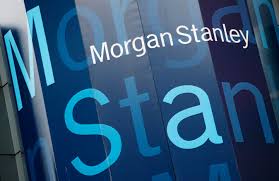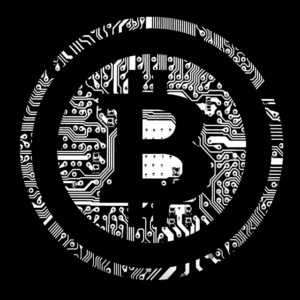 For those looking for a quick primer on bitcoins and blockchain and how they fit into the payments industry, read on. We’ve got a useful collection of expert insights and reports from Accenture, Deloitte, KPMG and EY to PwC, the European Central Bank, Goldman Sachs and Morgan Stanley to help you understand bitcoins and blockchain better.
For those looking for a quick primer on bitcoins and blockchain and how they fit into the payments industry, read on. We’ve got a useful collection of expert insights and reports from Accenture, Deloitte, KPMG and EY to PwC, the European Central Bank, Goldman Sachs and Morgan Stanley to help you understand bitcoins and blockchain better.
PwC provides a valuable strategy guide to bitcoins and blockchain or distributed ledger technology that could soon replace notary publics, manual vote recounts, and the way banks manage transactions. Deloitte looks at three major challenges faced by governments looking to regulate blockchain technology. An EY report identifies how fintech will benefit from blockchain technologies.
 Accenture says with blockchain, financial assets can become active, programmable objects that exist simultaneously on ledgers distributed anywhere. EY sees the potential for blockchain to make ledgers more transparent, trustworthy and efficient and potentially disrupting the financial services and other industries. KPMG foresees real potential in distributed ledger technology and says it’s critical for financial services decision-makers need to stay on top of blockchain developments.
Accenture says with blockchain, financial assets can become active, programmable objects that exist simultaneously on ledgers distributed anywhere. EY sees the potential for blockchain to make ledgers more transparent, trustworthy and efficient and potentially disrupting the financial services and other industries. KPMG foresees real potential in distributed ledger technology and says it’s critical for financial services decision-makers need to stay on top of blockchain developments.
A European Central Bank report defines the bitcoin and blockchain technology and its potential impact on the EU financial services industry. Morgan Stanley analyzes the impact of blockchain technology and its impact both as a disruptive threat or a new tool for the financial industry.
An in-depth Goldman Sachs report looks at specific examples of the impact of blockchain technology on a variety of real-world scenarios. New York law firm Pillsbury Winthrop Shaw Pittman LLP provides a simple definition of bitcoin and blockchain technology. CoinDesk highlighted seven best-performing cryptocurrencies by market capitalization for the year and the factors that affected the markets.
A Strategist’s Guide to Blockchain
 A consortium of banks gain market share by settling trades in real-time (instead of waiting three days for the trade to clear) and underwriting loans in a day (instead of waiting two weeks), all with minimal risk. The same banks also start to execute same-day currency trades at optimal exchange rates, spending a fraction of the costs required in the past. All of these transactions are tracked and statistics are kept, so that governments are aware of the movement of capital across their borders, and activity is monitored for patterns that might indicate money laundering. But the identity of the individual traders or purchasers is untraceable.
A consortium of banks gain market share by settling trades in real-time (instead of waiting three days for the trade to clear) and underwriting loans in a day (instead of waiting two weeks), all with minimal risk. The same banks also start to execute same-day currency trades at optimal exchange rates, spending a fraction of the costs required in the past. All of these transactions are tracked and statistics are kept, so that governments are aware of the movement of capital across their borders, and activity is monitored for patterns that might indicate money laundering. But the identity of the individual traders or purchasers is untraceable.
The name of the technology that could make all this happen is blockchain. Originally the formal name of the tracking database underlying the digital currency bitcoin, the term is now used broadly to refer to any distributed electronic ledger that uses software algorithms to record transactions with reliability and anonymity. This technology is also sometimes referred to as distributed ledgers (its more generic name), cryptocurrencies (the electronic currencies that first engendered it), bitcoin (the most prominent of those cryptocurrencies), and decentralized verification (the key differentiating attribute of this type of system). Via strategy-business.com
Bitcoin at the crossroads | Deloitte US
 Bitcoin has captured the imagination of consumers and businesses around the world as a major breakthrough in how value is exchanged. The Bitcoin “blockchain” is a fundamental breakthrough in computer science that solves what seemed to be an unsolvable problem: how to ensure that a digital transaction happens only once. Yet there is a critical question that is hanging over Bitcoin, potentially slowing the pace of innovation, and adoption i.e., how will Bitcoin be regulated?
Bitcoin has captured the imagination of consumers and businesses around the world as a major breakthrough in how value is exchanged. The Bitcoin “blockchain” is a fundamental breakthrough in computer science that solves what seemed to be an unsolvable problem: how to ensure that a digital transaction happens only once. Yet there is a critical question that is hanging over Bitcoin, potentially slowing the pace of innovation, and adoption i.e., how will Bitcoin be regulated?
Here are three practical reasons why policy makers and regulators may consider slowing down the pace of regulatory intervention-thus giving bitcoin and blockchain more time and freedom to explore its potential. Via www2.deloitte.com
EY: Blockchain reaction: Tech plans for critical mass
 In financial services, the first round of blockchain pilots is exploring more efficient ways to provide today’s services, such as transferring equities or other financial instruments in blockchain environments with potentially faster settlement and far lower transaction costs.
In financial services, the first round of blockchain pilots is exploring more efficient ways to provide today’s services, such as transferring equities or other financial instruments in blockchain environments with potentially faster settlement and far lower transaction costs.
But the long-term blockchain vision is of markets that run by themselves, with finance embedded directly into the natural activities occurring within those markets. In such an environment, the finance industry will look very different than it does today. Via ey.com
Banking in a World of Programmable Assets
 For several years, the media has been full of noise about the Bitcoin cryptocurrency. However, in recent months the focus has widened from cryptocurrencies like Bitcoin toward the broader potential of the blockchain technology that underpins it—including the creation of distributed consensus ledgers (DCLs). Now the focus has shifted again, to the implications blockchain brings for financial assets themselves.
For several years, the media has been full of noise about the Bitcoin cryptocurrency. However, in recent months the focus has widened from cryptocurrencies like Bitcoin toward the broader potential of the blockchain technology that underpins it—including the creation of distributed consensus ledgers (DCLs). Now the focus has shifted again, to the implications blockchain brings for financial assets themselves.
These implications are profound. To date, we have lived in a world where financial assets exist as passive digital entries on separate ledgers. However, with blockchain, these same assets can become active, programmable objects that exist simultaneously on ledgers distributed anywhere across the globe. This is feasible because blockchain creates verifiable, auditable consensus around any financial asset across ledgers in near real time. Via Accenture
EY: Implementing blockchains and distributed infrastructure
 Blockchain and distributed ledger technology is quickly gaining traction in the financial services industry. Both incumbents and start-ups are actively looking to apply the technology to reduce costs or improve efficiency. The technology’s potential to make ledgers more transparent, trustworthy and efficient leads to suggestions that it can possibly revolutionize financial services and other industries.
Blockchain and distributed ledger technology is quickly gaining traction in the financial services industry. Both incumbents and start-ups are actively looking to apply the technology to reduce costs or improve efficiency. The technology’s potential to make ledgers more transparent, trustworthy and efficient leads to suggestions that it can possibly revolutionize financial services and other industries.
Applying the blockchain within each firm’s context is complicated, however: despite companies’ enthusiasm and its rapid evolution, the technology is still in its infancy. It is as yet unclear what business needs, if any, the blockchain will truly resolve, and some question whether this technology is “looking for a solution.” While it may take years for its potential benefits to crystallize, firms understandably aim to experiment with the technology to uncover valuable applications.
To help firms understand the technology and how its power can be harnessed, this article explains the blockchain’s potential to change financial services, explores possible applications and describes the issues worth considering when applying the technology. Via EY.com
Consensus – Immutable agreement for the internet of value
 Despite being highly regulated, the financial services industry (including the rigorously scrutinized capital markets sector) foresees real potential promise in distributed ledger technology. Therefore, financial services decision-makers need to stay on top of the evolving consensus mechanism landscape. We hope this paper provides them with the relevant questions to ask when deciding on whether this technology is right for them, and if so, what kind, and how it might best be implemented.
Despite being highly regulated, the financial services industry (including the rigorously scrutinized capital markets sector) foresees real potential promise in distributed ledger technology. Therefore, financial services decision-makers need to stay on top of the evolving consensus mechanism landscape. We hope this paper provides them with the relevant questions to ask when deciding on whether this technology is right for them, and if so, what kind, and how it might best be implemented.
In our opinion, blockchain and distributed ledger technology hold significant potential within financial services as a secure an efficient decentralized instrument of trust between counterparties. We believe it’s an opportune time to think through how distributed ledger technologies can be effectively and efficiently used to overcome the previous challenges within the public blockchain called Bitcoin. The following pages explore the past journey, present states and abroad potential opportunities for the future. Via KPMG
A brave new world? What impact will distributed ledger technology have on the financial industry?
 In response to this level and speed of change, standing still is not an option. We have seen the impact on businesses that adapt and those which don’t. For example, the technical revolution hit the taxi industry when mobile app technology allowed people with a vehicle and free time to offer taxi services.
In response to this level and speed of change, standing still is not an option. We have seen the impact on businesses that adapt and those which don’t. For example, the technical revolution hit the taxi industry when mobile app technology allowed people with a vehicle and free time to offer taxi services.
Technical disruption is also changing the car industry as IT visionaries have set out to develop cars that can selfpark and self-drive using electrical engines and tablet technology. Companies that shy away from technological changes and do not adapt to the new digital environment risk falling by the wayside.
The financial industry is also experiencing these changes and financial companies are looking at new technologies as they emerge and deciding whether or not to embrace them and the new opportunities they provide. One of the more recent technological developments that holds potential for the financial industry is distributed ledger technology, or DLT. This article looks briefly at what exactly this new technology is and what the potential implications are for Europe’s financial market infrastructure. Via European Central Bank
Global Insight: Blockchain in Banking: Disruptive Threat or Tool?
 Blockchains could have widespread potential to disrupt financial intermediaries. Our in-depth study suggests several misconceptions & identifies 10 hurdles to overcome to make blockchain a reality in banking. The opportunity is clear but the blue sky is too far off to impact our 2017/18 earnings.
Blockchains could have widespread potential to disrupt financial intermediaries. Our in-depth study suggests several misconceptions & identifies 10 hurdles to overcome to make blockchain a reality in banking. The opportunity is clear but the blue sky is too far off to impact our 2017/18 earnings.
The pot of gold? Higher efficiencies. It’s early days, but industry heavyweights are sponsoring a wide range of blockchain use cases supported by industry consortiums. As NIM fades and capital builds, global bank managements press harder for a step down in costs. Cost mutualization through blockchain architected financial system utilities could provide some earnings boost after the related multi-year investment spend plateaus.
But blockchains could be a double-edged sword and disrupt financials. Blockchains won’t just change the Financial Services’ ITarchitecture.They could also change accessible profit pools. A lot will depend on the governance and how quickly incumbents move.Thefirms holding the keys to the data and the IT architecture could drive more profit pool towards themselves.So it’s no wonder that the custodians like JPM, BK and STT are among the lead sponsors of Linux Hyperledger and are members of R3 as they seek to drive the standard and retain their ground. Via Morgan Stanley
Goldman Sachs – Blockchain: Putting theory into practice
 Blockchain has captured the imagination of Silicon Valley and Wall Street alike, leaving behind its origins as the underlying technology of Bitcoin. Yet much of the discussion around its potential uses remains abstract. The focus is on the power of a distributed ledger to decentralize markets and undermine the control of existing middlemen.
Blockchain has captured the imagination of Silicon Valley and Wall Street alike, leaving behind its origins as the underlying technology of Bitcoin. Yet much of the discussion around its potential uses remains abstract. The focus is on the power of a distributed ledger to decentralize markets and undermine the control of existing middlemen.
But the potential of blockchain is more nuanced and far-reaching than that simple narrative. To move beyond the theoretical to the practical, we explore a range of specific real-world applications across a cross-section of markets and industries, including travel, energy, real estate, and finance. We illustrate where the attributes of blockchain are best suited to the business problems at hand and quantify how it might shift the dynamics of the industry. We highlight private and public companies poised to serve as enablers or exploiters of the shift – and analyze where blockchain could create new profit pools or undermine existing ones.
A key takeaway across these applications is that blockchain is not just about disintermediating the middleman. In some cases, blockchain could disrupt markets and existing participants, while in others, it promises to help drive cost savings by reducing labor-intensive processes and eliminating duplicate effort. And in some instances, it can create new markets by exposing previously untapped sources of supply. The common thread is that by enabling a fundamentally new type of database technology that can be distributed across organizations, blockchain creates the foundation for solving problems or seizing opportunities that have eluded current systems. Via Goldman Sachs
Blockchain Basics: A Primer

You have probably heard of Bitcoin, a peer-to-peer, non-governmental currency. Bitcoin is the first money that is its own payment system. That is, no bank, money transmitter or intermediary of any kind is required to clear and settle its transactions, which complete in mere seconds. The technology upon which Bitcoin is built ensures this work is done in a decentralized way.
This technology, called “blockchain technology,” “distributed ledger technology,” or simply “DLT,” is just as good at clearing and settling transactions in other assets as for bitcoins. Indeed, it might be even better. What other assets? Securities, commodities, deeds to property, ownership of artwork, even medical records. The potential of this technology has been widely recognized. Via Pillsbury Winthrop Shaw Pittman LLP
Not Just Bitcoin: The Top 7 Cryptocurrencies All Gained in 2016
 2016 has been an exciting year for cryptocurrencies.
2016 has been an exciting year for cryptocurrencies.
With most of the major open-source currencies showing growth this year and with some expected to see significant expansion in 2017, 2016 reflects a loss of faith in traditional money systems in light of the global populism trend and a growing confidence in the underlying technologies in play for crypto transactions.
As the year comes to an end, CoinDesk took a moment to look at the best-performing cryptocurrencies by market capitalization for the year and the factors that affected the markets throughout the year. Via coindesk.com
Bitcoin and blockchain insight
We hope you found this overview of bitcoin and blockchain technology valuable. Our goal in covering it, is to share new developments that may disrupt the traditional payments industry and highlight some of the trends as well as pitfalls ahead.








LET’S CONNECT